2017 Infiniti QX80: Car Seat Check

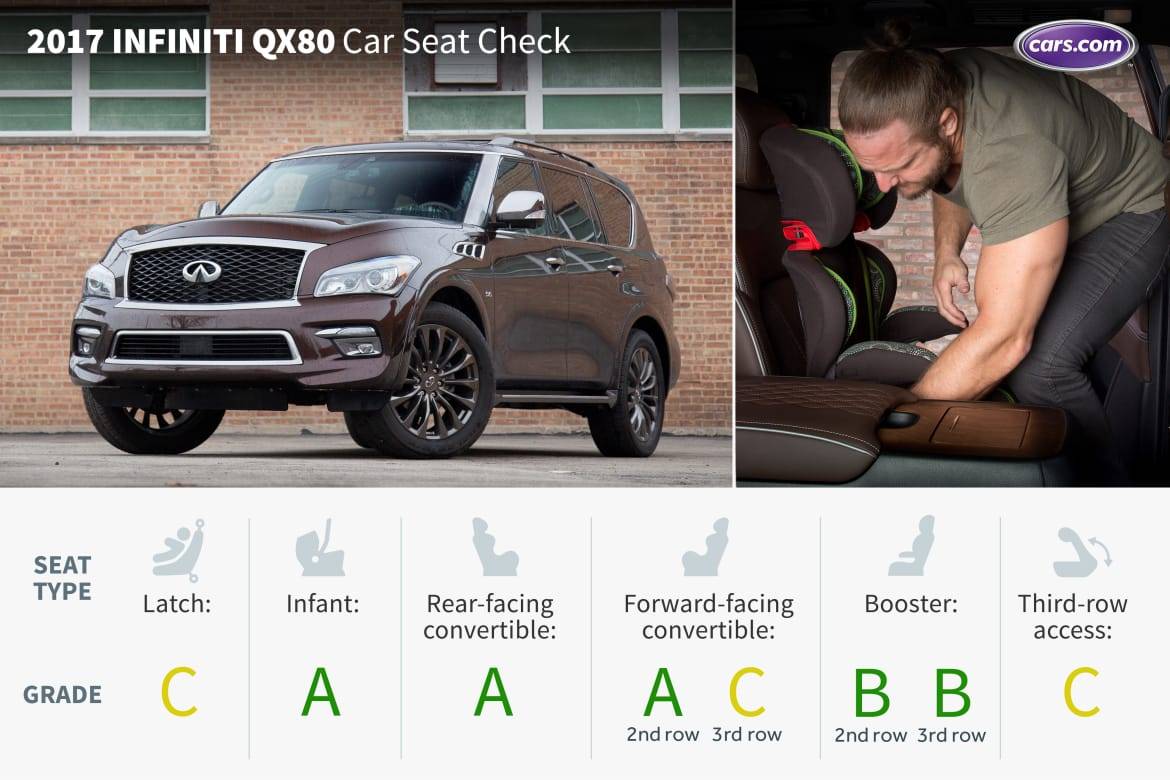
CARS.COM — Infiniti’s big, decadently luxurious SUV may not have changed much in the past couple of model years, but its Car Seat Check credentials are taking a couple of dings for 2017. Although parents may still find themselves making concessions for the QX80’s beguiling comfort, we experienced significant discomfort installing our forward-facing convertible seat in the third row due to an odd and frustrating tether-anchor arrangement.
How many car seats fit in the second row? Two
How many car seats fit in the third row? Two
What We Like
- There are two sets of lower Latch anchors inside slits beneath the leather upholstery of the second-row captain’s chairs; they are clearly identified. The second row’s two top tether anchors lie at the base of the seatbacks; they’re exposed through a slit in the fabric.
- Our rear-facing infant safety seat installed easily using the lower Latch anchors and the child seat’s hooklike connectors. It sat flat on the seat cushion and left the front passenger tons of legroom.
- Our convertible seat also installed easily in both the rear- and forward-facing positions in the second row, and the Latch anchors again were easy to connect to, this time with the convertible seat’s bulkier connectors. For the forward-facing seat, we removed the head restraint so the child seat would lie flat against the seatback. The tether anchor was also easy to use.
- Our booster seat was easy to install in the second row, sitting flat on the seat cushion comfortably within the bolstering, and flat against the seatback once the head restraint was removed.
- Installing the booster in the third row was also easy, similarly requiring head-restraint removal. To do this, we had to use the power-tilting function to get the seatback into a position to allow the restraint to clear the ceiling.
What We Don’t
- To install the forward-facing convertible in the third row, we used the middle position’s seat belt since the QX80’s third row lacks Latch anchors. Click here to read how to correctly install a car seat with a seat belt. Parents might need to seek out a car-seat tech for help; click here to find one in your area. Getting the seat belt through the child seat’s belt path requires pulling a recessed strap down from the ceiling, connecting it with another strap, then buckling it in the regular seat belt buckle — a mildly complicated mechanism.
- Also with regard to the forward-facing convertible’s installation in the third row, there’s just one tether anchor in an awkward and inconvenient position, slightly off to the side as opposed to a central position; the child seat’s tether strap must be extended to its full length to connect to the tether anchor. Once the seat is installed, it sits flush enough on the cushion but just barely sufficiently flat on the seatback even after the angle of the seat is adjusted rearward. We found this setup to be difficult, and because of our experience this time around, both the Latch system and third-row forward-facing-convertible installation lost a letter grade since our last QX80 check for 2016.
- Both the second- and third-row seat belt buckles are on floppy fabric bases that pull out of a hole in the leather upholstery, and the lack of stiffness could make it difficult for children to strap themselves in independently. The same goes for the third row seat belt buckles, which have a similar setup but are even floppier.
- One area that actually improved its letter grade this go-around despite still falling into the negative category is third-row access. Access is gained through an opening once the seats fold and tumble forward via a lever. The seats aren’t too heavy to manage and the pathway is sufficiently wide for even a larger body to pass through, but children (and even some adults) are going to have difficulty with the multistep entry and high step-in height, even with the aid of the running board.
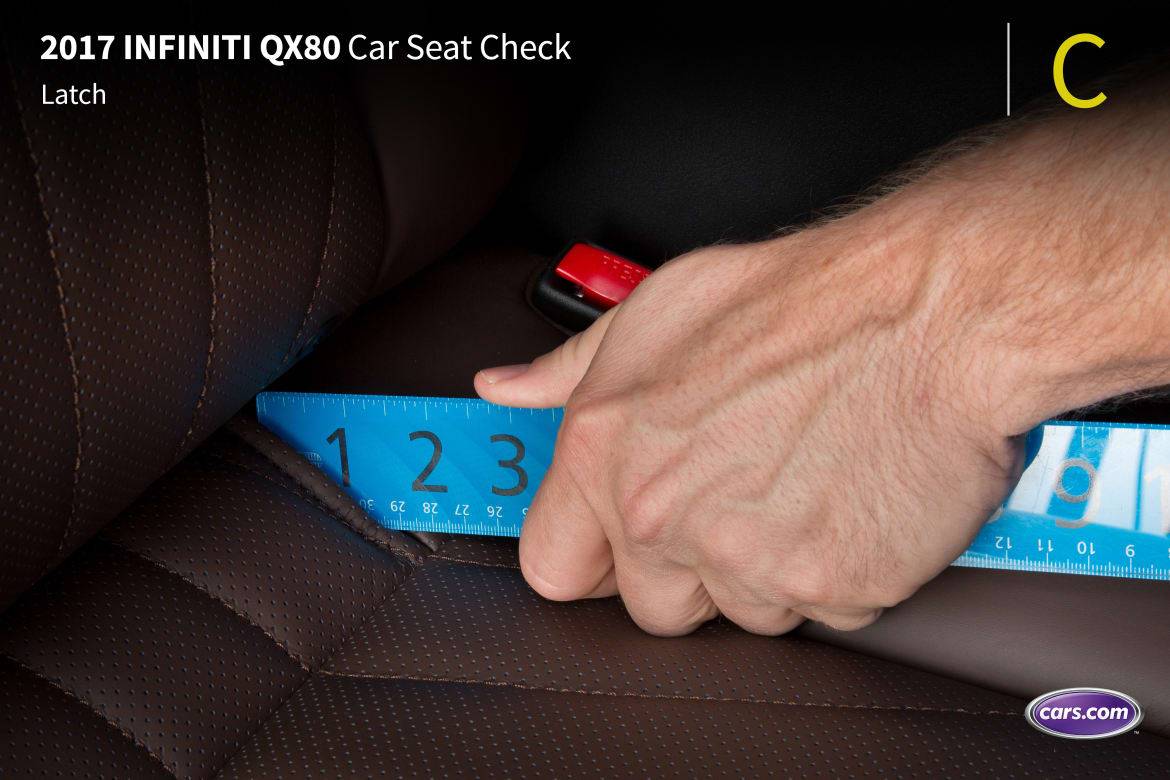
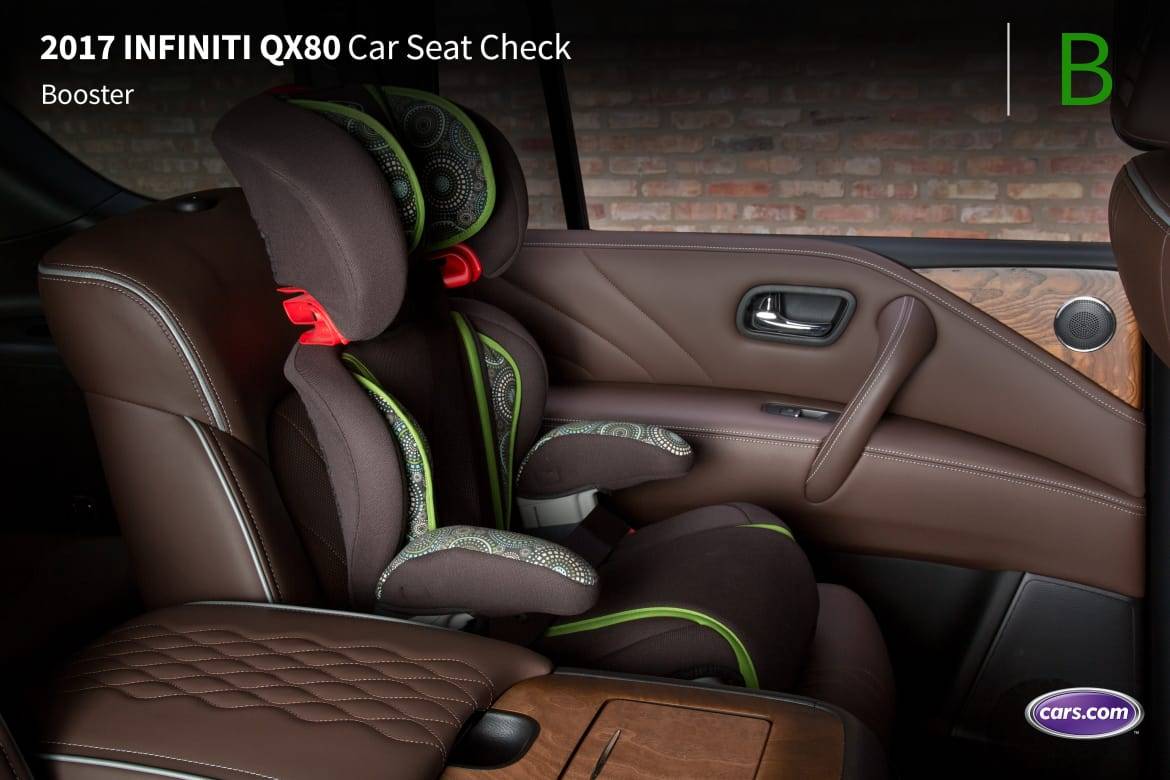
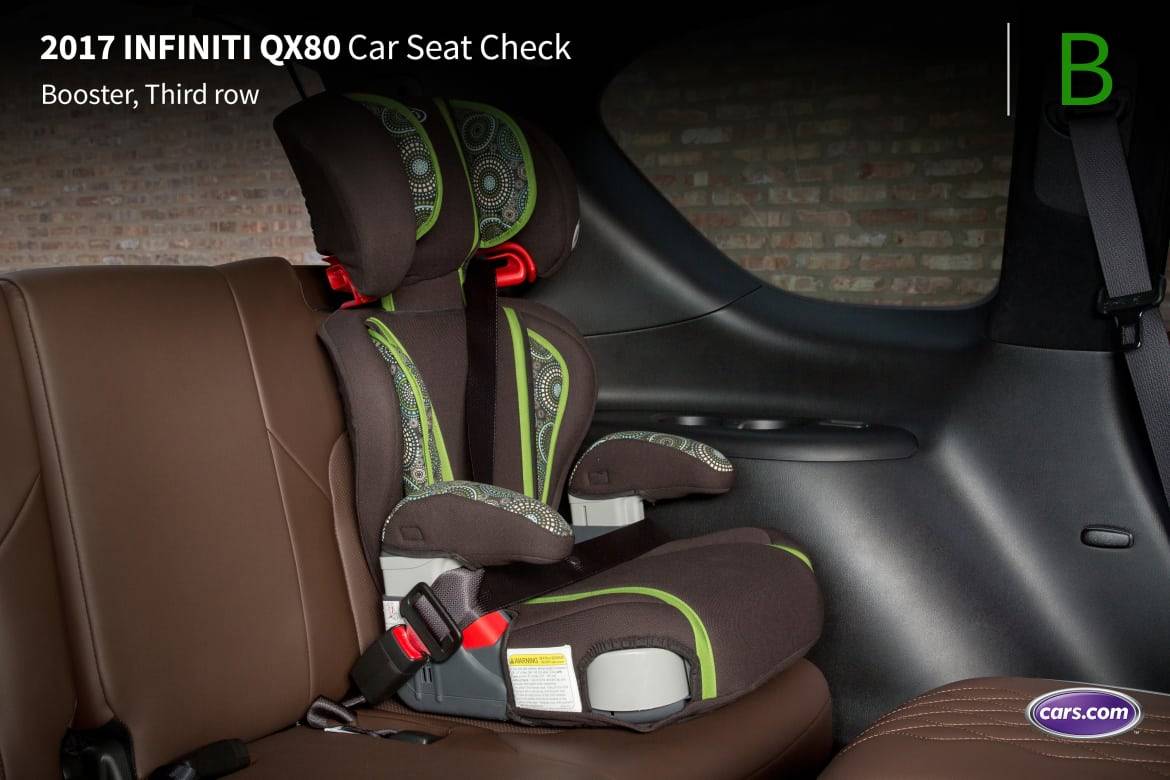
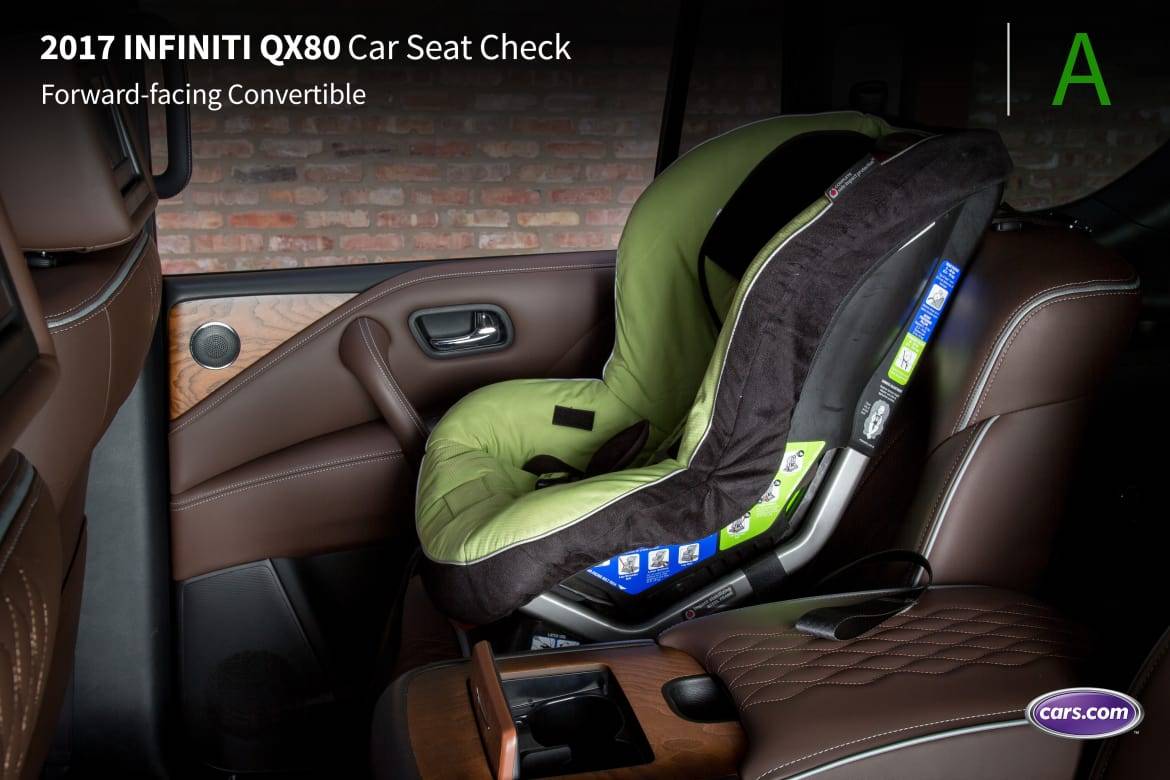
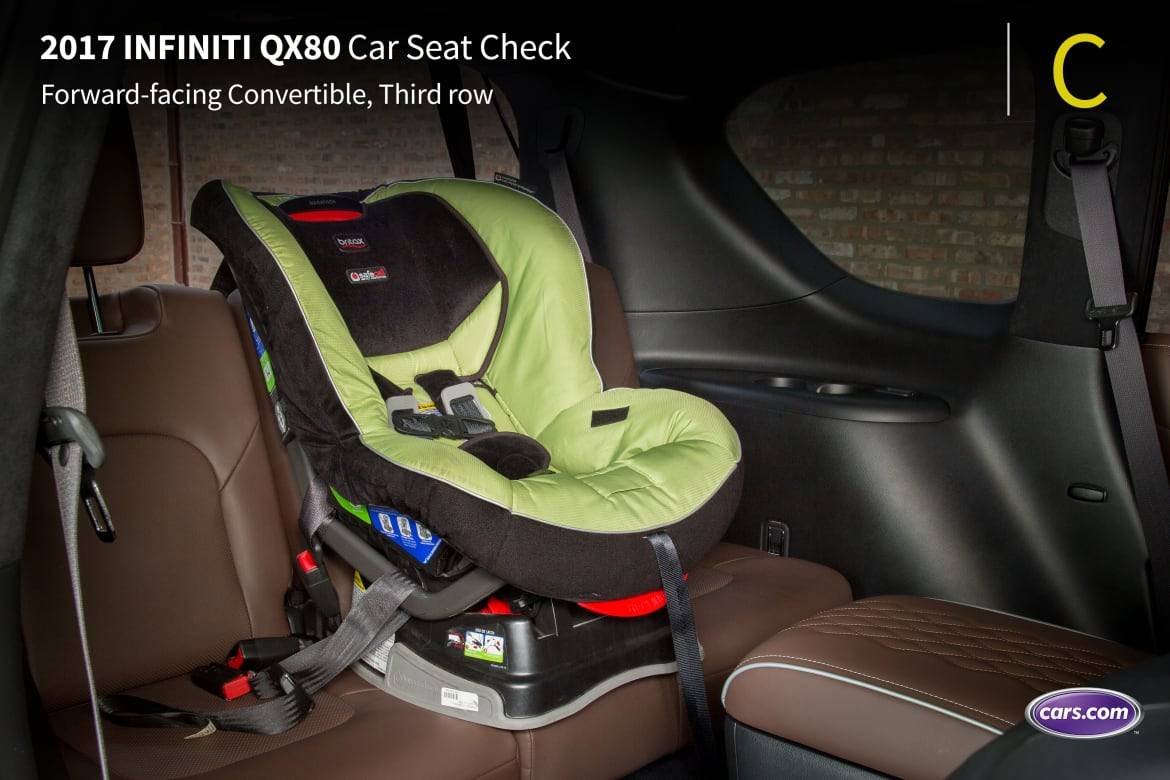
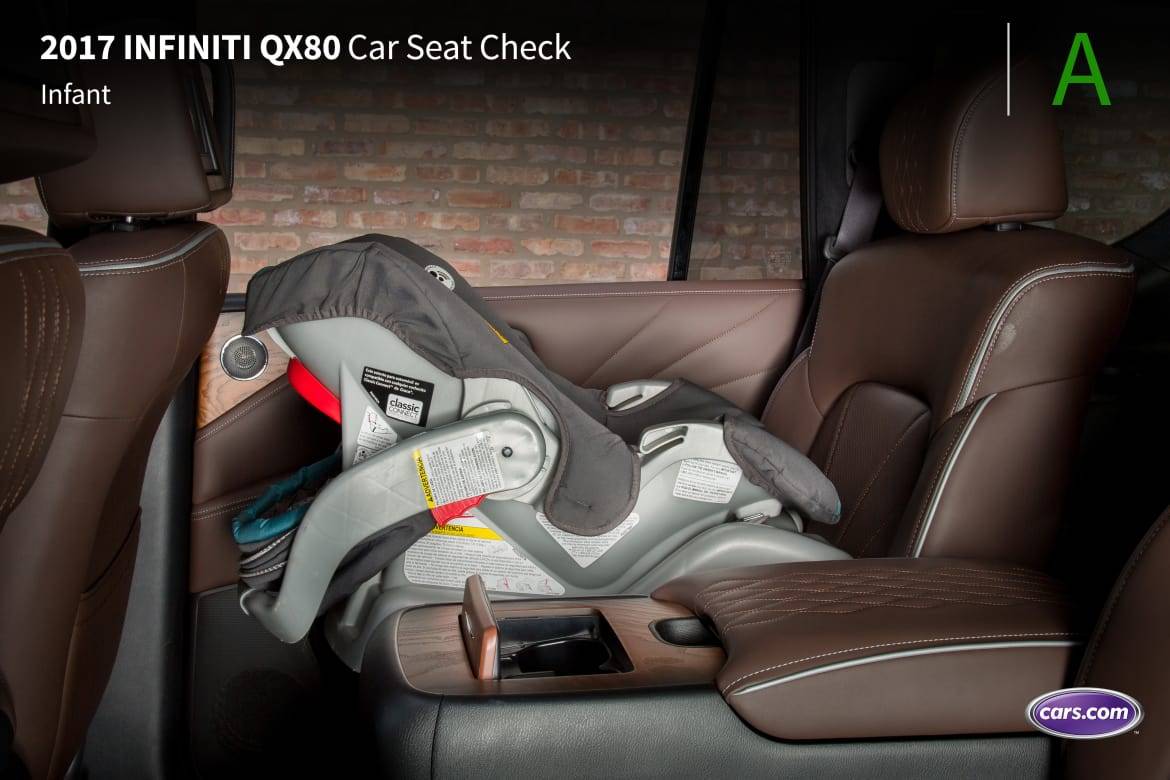
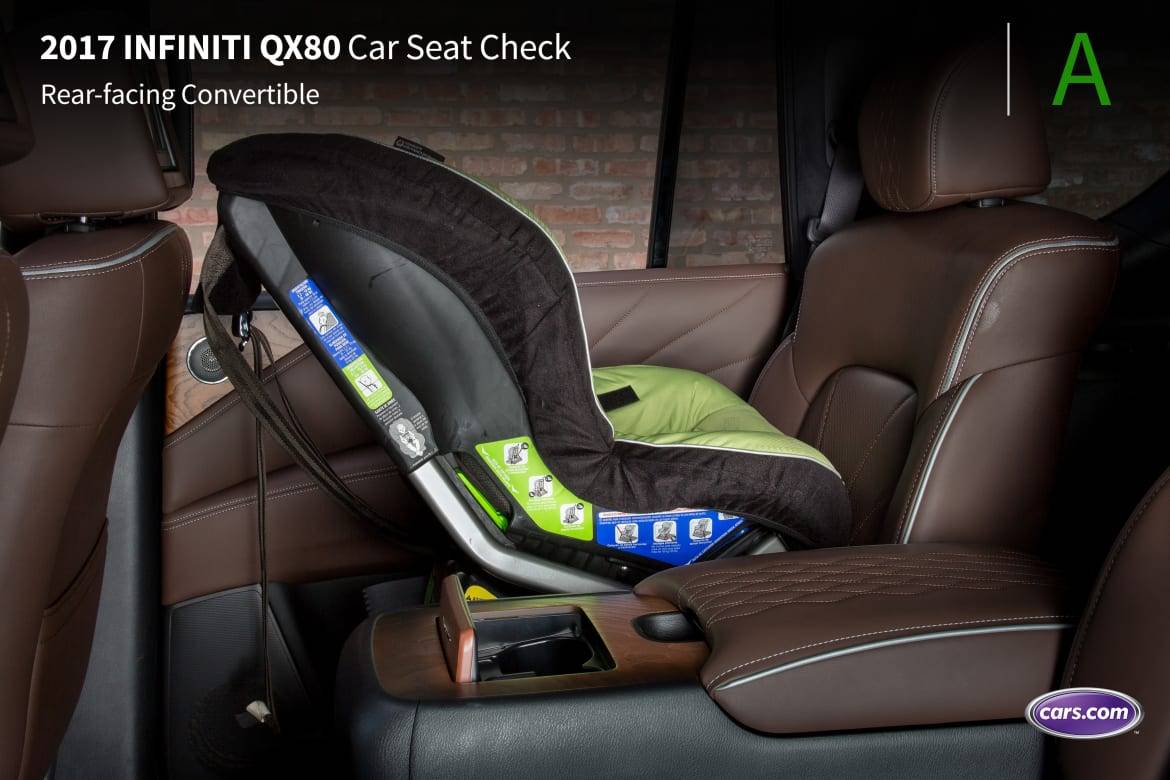

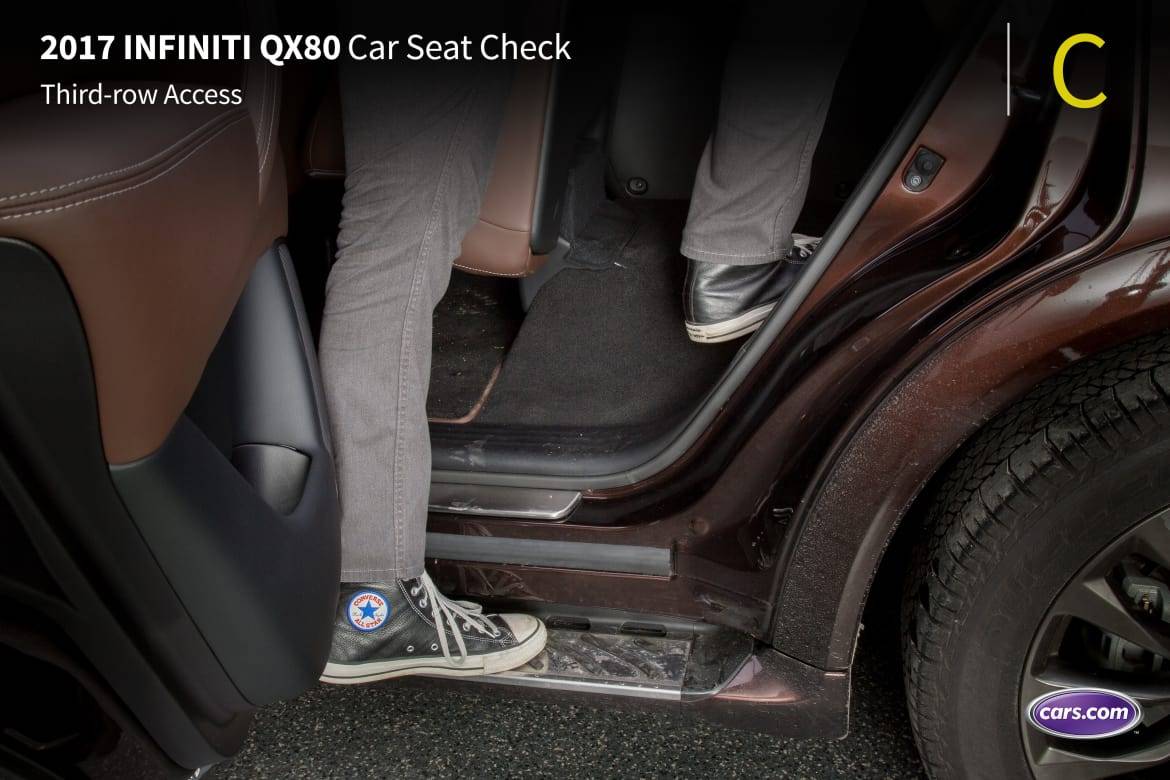









Grading Scale
A: Plenty of room for the car seat and the child; doesn’t impact driver or front-passenger legroom. Easy to find and connect to Latch and tether anchors. No fit issues involving head restraint or seat contouring. Easy access to the third row.
B: Plenty of room. One fit or connection issue. Some problems accessing third row when available.
C: Marginal room. Two fit or connection issues. Difficult to access third row when available.
D: Insufficient room. Two or more fit or connection issues.
F: Does not fit or is unsafe.
About Cars.com’s Car Seat Checks
Editors Jennifer Geiger, Jennifer Newman and Matt Schmitz are certified child safety seat installation technicians.
For the Car Seat Check, we use a Graco SnugRide Classic Connect 30 infant-safety seat, a Britax Marathon convertible seat and Graco TurboBooster seat. The front seats are adjusted for a 6-foot driver and a shorter passenger. The three child seats are installed in the second row. The booster seat sits behind the driver’s seat, and the infant and convertible seats are installed behind the front passenger seat.
We also install the forward-facing convertible in the second row’s middle seat with the booster and infant seat in the outboard seats to see if three car seats will fit; a child sitting in the booster seat must be able to reach the seat belt buckle. If there’s a third row, we install the booster seat and a forward-facing convertible. To learn more about how we conduct our Car Seat Checks, go here.
Parents should also remember that they can use the Latch system or a seat belt to install a car seat, and that Latch anchors have a weight limit of 65 pounds, including the weight of the child and the weight of the seat itself.

Former Assistant Managing Editor-News Matt Schmitz is a veteran Chicago journalist indulging his curiosity for all things auto while helping to inform car shoppers.
Featured stories

15-Year Car Loans Aren’t a Thing, But Americans Are Getting More Comfortable With Long Loan Terms

2025 Kia Telluride Review: Rougher Roads Ahead












